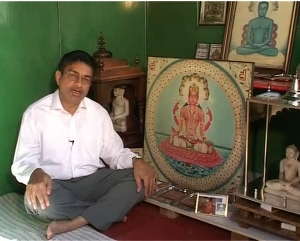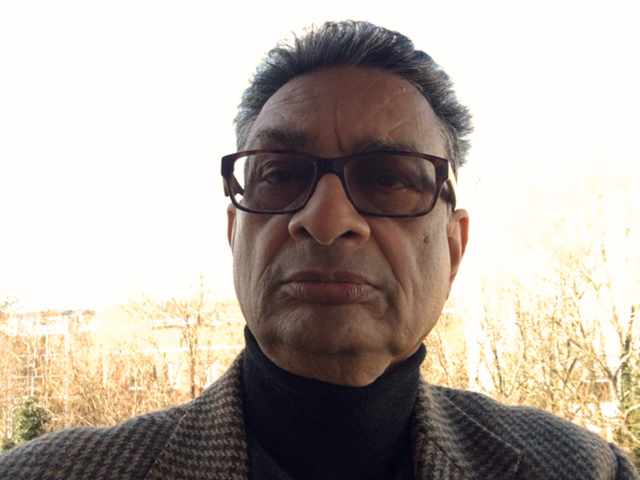
Victoria & Albert Museum
-
Video: Painting of Padmavati Devi

Duration: 5 mins 17 secs
Dinesh Shah talks about a painting of Padmavati Devi, the female attendant of the 23rd Tirthankara, Lord Parshvanatha.
 We have been living in the London Borough of Harrow for over thirty years now. This painting we have got of Padmavati Devi is now with us for over 25 years. The primary Jain pantheon says 24 Tirthankaras starting with Lord Rishabh Dev and ending with Lord Mahavira.
We have been living in the London Borough of Harrow for over thirty years now. This painting we have got of Padmavati Devi is now with us for over 25 years. The primary Jain pantheon says 24 Tirthankaras starting with Lord Rishabh Dev and ending with Lord Mahavira.
Each Tirthankara has a divine male and female attendant called Yaksh and Yakshini. The 23rd Tirthanaka, Lord Parshvanatha has a Yaksh called Dharanendra and a Yakshini called Padmavati Devi. Padmavati Devi is considered a live deity. It is said that a worshipper who has problems and approaches Padmavati Mata, his prayers are invariably answered. This is one reason why in India the highest number of temples dedicated to Lord Parshvanatha and Padmavati Devi are represented.
I must now give a little background of how this painting of Padmavati Devi came into our family's possession. My brother, during the early 70s, was in Mumbai India and this is where he met late Sataldani Pandit Sri Deradlal Tokusi Shah. In 1981 Panditji's 75th birthday was celebrated in Mumbai by the Jain community. In the summer of 1981 Sataldani Pandit Deradlal Tokusi Shah with his wife Japabel came to London as the guests of our family. A function was held in his honour at Bharatiya Vidya Bhavan in Kensington. During this time, Panditji brought the original painting of Padmavati Devi together with that of Lord Parshvanatha and this is a reproduction from that painting.
In my opinion, through my own personal worship of Mahadevi Padma Rathi Mata, this painting holds power, that is shakti, and tranquility, that is shanti, in equal measure. |
 Dinesh Z. Shah
Dinesh Z. Shah
